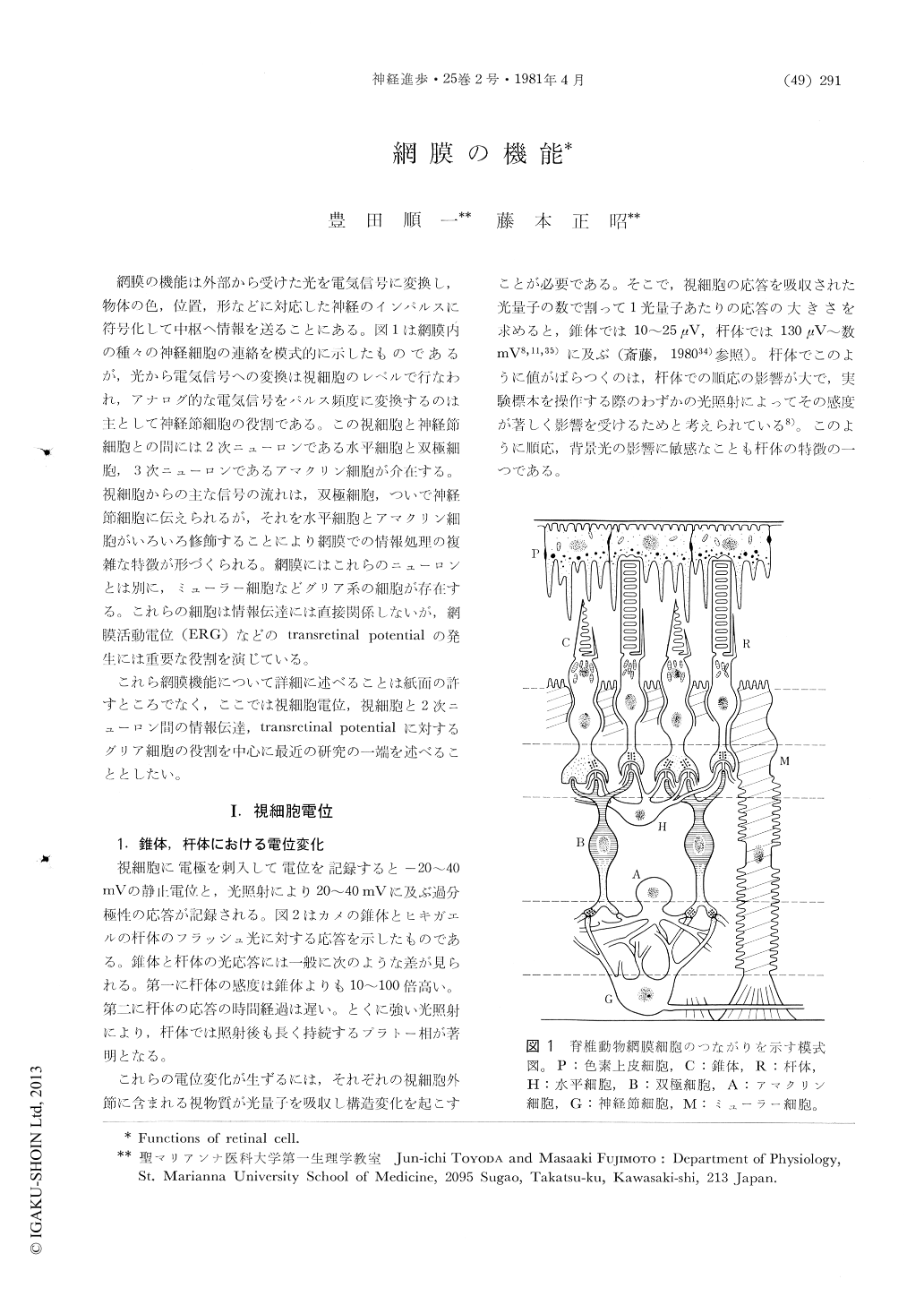Japanese
English
- 有料閲覧
- Abstract 文献概要
- 1ページ目 Look Inside
網膜の機能は外部から受けた光を電気信号に変換し,物体の色,位置,形などに対応した神経のインパルスに符号化して中枢へ情報を送ることにある。図1は網膜内の種々の神経細胞の連絡を模式的に示したものであるが,光から電気信号への変換は視細胞のレベルで行なわれ,アナログ的な電気信号をパルス頻度に変換するのは主として神経節細胞の役割である。この視細胞と神経節細胞との間には2次ニューロンである水平細胞と双極細胞,3次ニューロンであるアマクリン細胞が介在する。視細胞からの主な信号の流れは,双極細胞,ついで神経節細胞に伝えられるが,それを水平細胞とアマクリン細胞がいろいろ修飾することにより網膜での情報処理の複雑な特徴が形づくられる。網膜にはこれらのニューロンとは別に,ミューラー細胞などグリア系の細胞が存在する。これらの細胞は情報伝達には直接関係しないが,網膜活動電位(ERG)などのtransretinal potentialの発生には重要な役割を演じている。
これら網膜機能について詳細に述べることは紙面の許すところでなく,ここでは視細胞電位,視細胞と2次ニューロン間の情報伝達,transretinal potentialに対するグリア細胞の役割を中心に最近の研究の一端を述べることとしたい。
Summary
Recent advances in the study of retinal cell function were briefly described. In the photo-receptor the energy of photons absorbed by visual pigments is converted into an electrical signal. In rods, the absorption of one photon by a rhodopsin molecule on the disc membrane causes a decrease in dark inward current through the outer segment plasma membrane to result in a hyperpolarizing potential change of the order of milivolts. Considering the distance between the disc and the plasma membrane, there must be some substance (internal transmitter) that trans-mits the information within the outer segment.

Copyright © 1981, Igaku-Shoin Ltd. All rights reserved.


